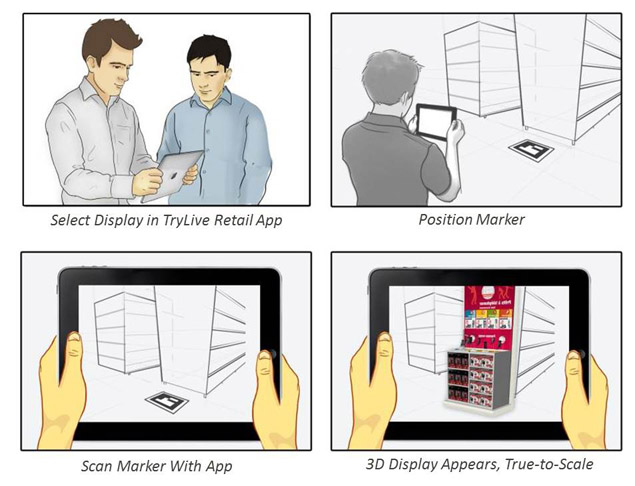Firstly, it is important to distinguish Augmented Reality (AR) from virtual reality (VR) – although these are beginning to be entwined as we shall discuss later. The latter (VR) replaces the real world with simulation, while AR adds information about the real world you can see and relates to the more general notion of mediated reality (a modified view of the environment that can also diminish rather than augment).
AR is achieved through a computer-link to the internet and uses a sensory input (such as sound, video, graphics or GPS data) in the form of over-laid data (though whether this is simulated depends on your point of view). The important issue is that the result enhances and mediates perception of the surroundings.
Moreover, augmentation happens in real-time and in conjunction with environmental elements (like sports scores on TV during a match). With the help of computer vision and object recognition, the information overlaid on perception of the real world is interactive, as this video demonstrates:-
One example of AR you may have heard of (Google Glass) got a mixed reception after its 2014 launch, and this suggests negative aspects of AR technology that may hinder its future. These relate to the legal, conceptual and even philosophical implications of over-laying with ‘mined’ data. For one thing, people become objects in the purview of AR, encased and defined by the limits of technological input – which can be biased or interfered with. Such concerns of technological affect were explored 30 years ago by David Cronenberg in his science-fiction film Videodrome (1983). The film explores the suspicion even then that the common visual medium at the time, the cathode ray tube (TV), was capable of corrupting, dehumanizing people as they merged with its technology:-
Of course, Cronenberg’s Distopian film may simply be a dated sci-fi horror film. The future may be more like that shown in the promotional video below, which praises the ‘Articulated Naturality Web’ (ANW). Or perhaps, like me, you are suspicious of this video’s use of ‘we’ in the Utopian world it presents: ‘we’ who will be able to break the barrier of the conventional, giving us the convenience of information wherever ‘we’ are whenever ‘we’ want it, rather than the mere 20% or 30% we have access to at the moment. Will getting 100% of the experience (from ANW) cost much in the future? How will this 100% experience be selected (and by whom)?
The other problem (at least at the moment) is that to use AR, you are reduced to using a tablet or smartphone, which becomes the window through which you see the augmented world. This is not a problem, however, for the makers of TryLive – a retail tool designed to help retailers position their displays – and eventually “convince” shoppers to purchase items. The tablet here replaces the need to measure up or imagine the item in place by literally making it a virtual reality.

Then there is the race in the world of games development, which fuses AR and VR even more (‘Why not have your virtual reality experiences and keep the world in your sight?’) by using holographic computing to overlay the real world with games elements. This surely throws up problems for those concerned about whether or not we will be living in a simulated reality in the future.
There is surely a very real danger that, in future, augmented reality will distract people from real reality – which will threaten everyone in the vicinity of your car. What is more, it is fine to take your iphone to exotic places to explore the interior of museums and buildings before you go in but there is already a history of muggers targeting tourists with expensive, desirable devices. Physical theft is one thing, but with the rise of AR apps, combined with ‘geotagging’, the likelihood of revealing who you are and where you are at the most inopportune moment will surely increase the occurrence of identity theft.
Or perhaps there is nothing to worry about in an augmented, simulated future.